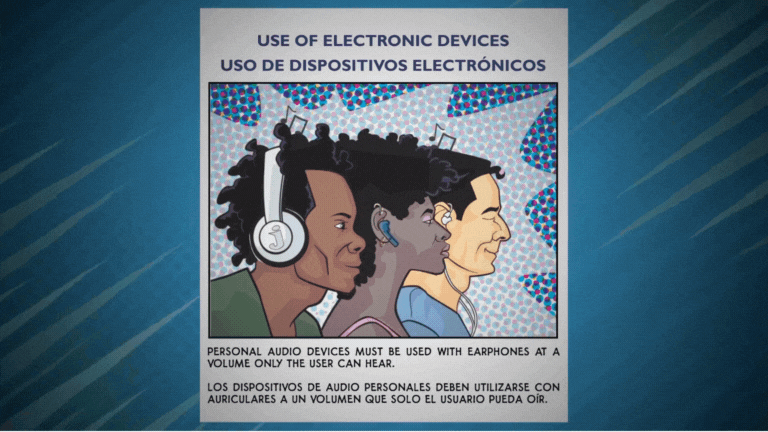
The Storyboard Media Group Blog
Not Your Typical PSA: How We Turned Art Into Impactful Video Content
At Storyboard Media Group, we believe the best content is content that stands out — which is why we partnered with artist L Jamal Walton and RATP Dev USA to create a truly unique animated PSA for GoDurham. By transforming static comic-style artwork into dynamic motion, we helped turn a routine public message into something eye-catching and memorable. This behind-the-scenes look shows how thoughtful planning, creative animation, and bold choices can elevate brand messaging across any platform. It’s a great reminder that when it comes to content, different gets noticed.
Something Unique as an Attention-Grabber
Storyboard Media Group recently partnered with artist L Jamal Walton and the team at RATP Dev USA to create an animated Public Service Announcement for the transit organization GoDurham. We (and the client) are really pleased with how this turned out and the role it will play in educating the public that uses the GoDurham system.
We’re sharing it here because we always suggest to clients that they try something a little different whenever possible in order to have content that is uniquely theirs. And we think this video is a great example of how marketers, learning and training professionals, and public organizations can think outside the box to create something that is different - but that still holds value as a communication device. See the video below.
What Are You Looking At?
Animating artwork isn’t an easy process, but it is a process that is made possible by adhering to a plan. Here’s the process step-by-step that went into creating this content:
1. Receiving 10 panels of artwork from the artist - L Jamal delivered 10 panels of comic book style artwork to us in layered files.
2. Examining the layers in the artwork - breaking down each panel and taking a look ‘behind the curtain’ gave us an idea of what we could, and couldn’t do, with the art.
3. Storyboarding the video - We presented the client with a graphical map of how the animation would move including transitions, backgrounds, on-screen text and more.
4. Creating a voice over - We gave the client a total of 9 voice artist options to choose from. In order to do this we asked artists to create two sentence examples of their voices and deliveries by providing them a portion of the script we created. Once the client decided who they liked, we had the voiceover produced.
5. Animating the static artwork - This is where the bulk of the work really began. We needed to separate all the artwork layers, create new layers, redraw some of the artwork (always staying true to the artist’s vision), put all the layers into animation software and create motion work to make things ‘pop’ as much as possible. This was not only the most difficult portion of the project, but also the most time-consuming.
6. Adding music, branding, voiceover - This is the stage where the animation and all the supporting content comes together to make the final video. If the plan is followed, everything should just fall into place. And that’s exactly what happened.
Where Is the Client Using the Content?
Because this is a public education piece, the video is being seen on all types of screens in a bunch of different environments. These include bus stations, on the organization website and social channels, television screens on buses, and other public spaces. For the most part, the audience will be captive (waiting for a bus, sitting on a bus, etc.) and it’s important that this video goes beyond the standard ‘do’s and dont’s’ type content you might expect to see when it comes to public organizations.
This was a fun project to work on and we think it’s a great example of how and why brands can try something a little different in order to stand out.
“Storyboard Media Group was an absolute pleasure to work with. They met our tight deadline and delivered a final video that exceeded our company’s expectations. Even with last-minute changes, their team accommodated us seamlessly and without hesitation.
Their communication was outstanding, and they put us completely at ease, we knew we had chosen the right partner to bring this campaign to life. We highly, highly recommend Storyboard Media Group and look forward to working with them again on future video projects.”
Repurposing Video Content: A Case Study
Repurposing video content allows companies to maximize the potential of their video content while expanding its reach and engagement. By transforming existing videos into different formats to use across different platforms, brands can target a wider audience and increase their visibility. In this case study, we look at one of our clients who did this and by using video content in 5 different ways.
4 Important Reasons Why You Should Repurpose Your Video Content
Repurposing video content is a great way to make the most of the digital assets that you’ve put time, energy and money into creating.
Repurposing video content saves time and resources by avoiding the need to create new content completely from scratch. Creative projects can require a lot of time and budget to get off the ground, so the less often you need to do it the better.
By adapting video content for different platforms, you can reach a much broader audience and engage them in various ways. This includes sharing short clips on social media, creating GIFs for e-commerce sites and using screenshots as photos you can use in different marketing pushes.
Reusing your video content in different ways provides opportunities to optimize it for search engines which can improve visibility and SEO rankings. Each new content piece can include different (but relevant) keywords and meta descriptions.
Repurposing video content helps you maintain a consistent brand message across multiple platforms, reinforcing your brand’s identity and building trust with your audience.
A Case Study in Repurposing Video Content
Storyboard Media Group works with all its clients to get them the most value for their budget. That’s why we’re big believers in repurposing video content. At the start of every project we ask our clients how they plan to use their video, and we provide suggestions for how to reuse it. That leads us to the case study of Strato Footwear.
This screenshot taken from video footage acts as a “photo” in digital marketing materials.
Strato Footwear has one mission: to keep your feet happy and stylish while keeping up with your fast-paced lifestyle. How do they do it? Strato Footwear has a secret weapon: Layered Comfort Design. They’ve carefully crafted their shoes with multiple layers of cushioning and support, giving your feet a cloud-like experience. They design their footwear lines with purpose and functionality, so you can strut confidently knowing you've got the best of both worlds.
According to Strato’s CEO, “we needed lifestyle content from Storyboard Media Group for our footwear launch. And we needed content to add to our website to make it look attractive and engaging to customers, as well as for social media use.”
To accomplish this, Storyboard Media Group spent a day filming the shoes on an actor that we hired just for the shoot. We filmed in six unique locations to show off the footwear in different settings. We even dressed the actor differently from one location to another. From this one day of filming, the final deliverables were (6) 15-second videos, (1) 30 second video, and a number of screenshots that we took from the video footage. This gave our client a lot of options for how and where to use the content.
“We used the 30-second video as our flagship video to showcase what our brand and shoes were about and how to wear them in multiple settings with ease.” This flagship video is on the client’s website as an introduction to the brand and product.
This “photo” is a screenshot from the filming we did.
The 15-second videos were used on social media to showcase the brand to wider audience, and in quicker bites. Digestible videos like these can be used as a way to quickly grab attention and drive customers to a brand’s website where they’ll find more information.
One of the ways Storyboard Media Group helps clients expand their content library is by offering screenshots of the video footage. This gives clients “photos” they can use on their site, in digital marketing material, and in a number of other ways. This isn’t possible with every project, but when a project allows it’s a great way to generate more content.
According to our client, “we used the screenshots & short 15-second videos in a remix way, where we (cut and combined footage) to develop even more entertaining short video clips combining all the content given to us by Storyboard Media Group. This allowed us to have even more content to utilize for posting on social platforms.”
In addition to using the content and screenshots on their website and social channels, Strato Footwear was even able to utilize some of the screenshots in marketing materials like their sales PDF.
“Storyboard was very easy to work with. They made the whole process seamless. I guided the team on what I was looking to get done regarding the look, feel, vibe, angles, and setting. They easily grasped the information I provided and took it up a notch with their creativity. They made sure I received enough content to get the ball rolling for my business.”
Storyboard Media Group can offer ideas and suggestions for how to get the most from your video project. During our initial consultation calls and meetings we learn about your project, your specific needs and how to create the content you need. Whether you’re a startup or an established brand we work with you to identify how to best get you the deliverables you need.





